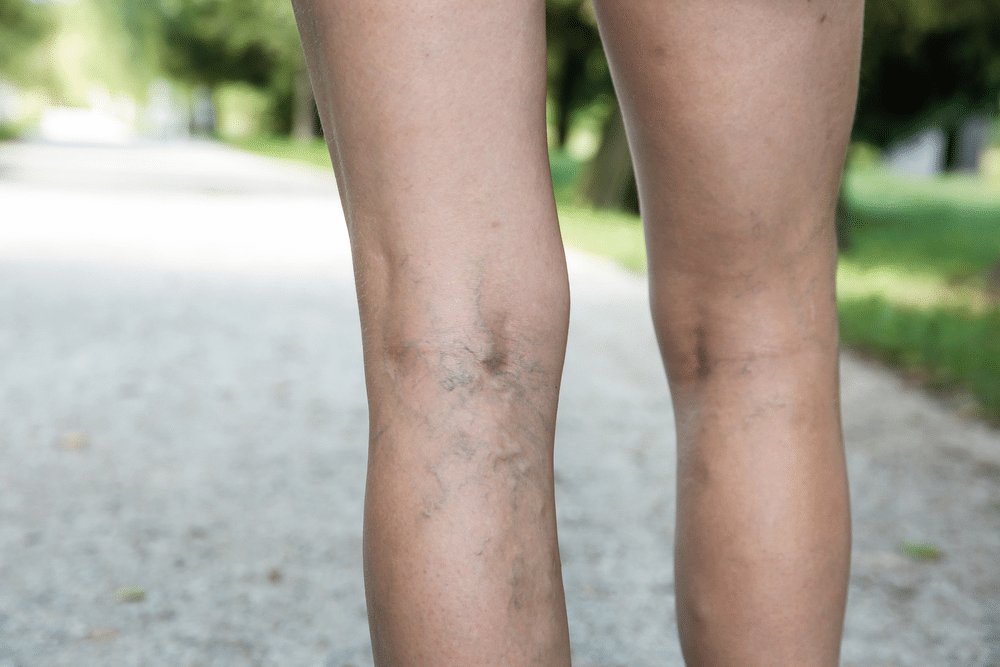Millions of people develop spider veins or varicose veins over the course of their life. These veins can be unsightly and, in some cases, painful and uncomfortable, which has led many people to seek treatment. Venus Vein Clinic in Omaha, Nebraska offers several treatments for venous disorders, including sclerotherapy treatment.
What Is Sclerotherapy and How Does It Work?
This popular vein treatment is safe and effective. It’s less invasive and less risky than surgery, and in 75% – 90% of cases it effectively removes spider veins and varicose veins (though multiple treatments may be required).
During this treatment, special chemicals are injected into the affected vein, causing the walls of the vein to swell and stick together. This prevents any additional blood from flowing through the vein and diverts the blood to nearby healthy veins. This can cause the spider vein or varicose vein to be reabsorbed into local tissue, and the treated vein will usually fade or vanish within a few weeks of receiving treatment.
What Is a Spider Vein?
A spider vein is a small, twisted blood vessel. Spider veins are closer to the skin’s surface and both smaller and thinner than varicose veins. These veins may appear red, purple, or blue and can be found most often on the legs or the face. Spider veins are generally painless but unattractive, so many people want to treat spider veins for cosmetic reasons.
What Is a Varicose Vein?
Varicose veins are usually larger and thicker than spider veins. They may appear dark purple or blue, have a cord-like appearance as the veins twist and bulge beneath the skin, and are most often found in the legs. Sometimes people seek treatment for their varicose veins for cosmetic reasons, but varicose veins can also cause pain, discomfort, cramping, swelling, and more serious problems.
What Causes Spider Veins and Varicose Veins?
Spider veins and varicose veins can be caused by weak or damaged valves, which result in the blood pooling in the feet and ankles. Heredity, hormone changes, sun exposure, and injuries are also causes of spider veins and varicose veins. Spider veins found in the face are often caused by tiny blood vessels bursting.
Spider veins and varicose veins are more common in people over thirty, in pregnant women, in women experiencing menopause, in overweight people, in people who spend a lot of time standing (like hairstylists, factory workers, and teachers), and in people who spend a lot of time sitting (like secretaries, computer programmers, and professional drivers).
When Should You Seek Sclerotherapy Treatment?
You Have Unsightly Spider Veins or Varicose Veins
If your veins are incredibly prominent and unsightly, it might be a good time to seek treatment. Many people seek treatment for their veins for cosmetic reasons instead of medical reasons. The presence of these unsightly veins can lead to a lack of confidence, but they can also cause discomfort and a burning sensation, making your life more unpleasant than it needs to be.
You Experience Aching, Swelling, or Burning Because of Your Veins
If you’re experiencing aching, swelling, burning, cramping, or any other negative effects because of your veins, you should consider seeking treatment. Sclerotherapy is relatively quick and painless and it can work to relieve these symptoms, which will increase your quality of life.
Your Doctor Is Concerned About Your Vein Health
Another sign you should seek sclerotherapy is if your doctor expresses concern about your vein health. Sometimes veins aren’t able to return blood to the heart for reoxygenation efficiently enough, which can result in a variety of problems and, depending on the severity of the venous insufficiency, may require treatment as soon as possible.
Even if your venous insufficiency is not an immediate problem, it’s probably a good idea to seek treatment before your veins create any other, larger problems that will need more invasive, expensive treatments.
What Will the Treatment Be Like?
Sclerotherapy treatment is relatively painless and does not require anesthesia. It’s also fast, as it can often be performed in under an hour.
A professional will clean the area and insert a fine needle into the vein to inject a chemical solution. Some solutions may contain lidocaine, which is a local anesthetic. This solution will irritate the lining of the vein and block any blood from flowing through the vein.
Then the doctor may disperse the chemical solution and keep blood out of the vein that received the injection by massaging the area and then applying a compression pad to the injection site.
What Happens After Treatment?
After receiving this treatment, you can continue your normal activities. You should avoid any really strenuous exercise, but it’s important to stay active to prevent blood clots from forming.
Try to stay out of the sun when possible for the two weeks following your appointment because sun exposure can result in dark spots. Wearing compression stockings or bandages during these two weeks can help maintain compression on your newly treated veins.
You might want to schedule a follow-up appointment a month later to determine how successful the treatment was and if you need another session to fully collapse any veins to achieve the results you want.
Schedule a Consultation Today
Contact us at Venus Vein Clinic in Omaha, Nebraska if you have any questions, concerns about the vasculature of your legs, face, or hands, or would like to schedule a consultation! Our clinic is devoted to diagnosing and treating venous disorders and we offer advanced, personalized treatments to ensure you receive excellent care and results.

